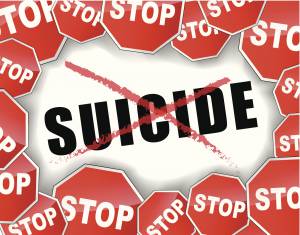
We have the ability to stop others from attempting suicide. We need to reach out to others and lend a helping hand to those who desperately need it.
This past spring, Canada experienced a crisis of suicides in its aboriginal population. In one northern Ontario community, more than 125 individuals attempted suicide in about a six-month time frame. Considering that the community itself only has a population of about 2,000, that figure is alarming. The suicide rate for First Nations males is 10 times higher than that of non-indigenous males. For women, the rate is 21 times higher. The government has responded by sending more healthcare providers to the area, and according to news reports, the Red Cross has gotten involved. Parliament held an emergency session last spring to address some of the problems, but it’s going to take time to change the statistics.
Suicide Prevention Tips
The World Health Organization knows that there is a suicide epidemic in the world. WHO estimates that one person dies every 40 seconds every year by suicide. That’s about 800,000 people around the world. This figure does not include those who do not succeed, which could be another 25 times more people. Nor does this figure calculate how many people are affected by suicide each year. It’s not just those who die or try to die, it’s those who love this person. In September, WHO wants to get the message across that suicide is preventable. It takes just three simple steps:
- Connect
- Communicate
- Care
One key element that researchers have found in preventing suicide is relationship. Those who are contemplating suicide often feel distant from those they love and they need the connections and communication for full recovery. It’s not easy to talk about suicide and it can be extremely scary. Many people avoid the conversation, because it can be so awkward. There’s also a myth that by talking about it, you actually encourage those who are thinking about it to actually do it. Many high schools don’t teach “Romeo and Juliet” just for that reason, but research hasn’t really show a connection.
When talking to someone about suicide, it’s important to listen and to show compassion without being judgmental, which can be a very difficult assignment as well. Here are some things you can say and questions you can ask:
- I have been concerned about you lately.
- How can I support you?
- I’m here for you. You’re not alone.
- I may not understand how you feel, but I love you and I want to help.
- I want to check in with you to see how you’re doing.
- Have you thought about finding professional help?
If you need some ideas on what not to do:
- Don’t say things like “look on the bright side” or “suicide will only hurt your family” or “suicide is wrong.”
- You don’t need to fix their problems or even give advice.
- Don’t blame yourself.
- Don’t promise to keep their secret.
Responding to a Crisis
When a person tells you that they’re thinking about suicide, even though you might be a layperson, you should evaluate the immediate danger. You can do this through asking them about their suicide plan. When someone has a specific plan, the means to carry out their plan, and a time, you should probably get help immediately. You don’t have to take care of this situation on your own, no matter what the other person wants. A life is a stake. You should never leave a suicidal person alone when an attempt seems imminent. You should also remove potentially lethal objects from the area as well.
Join International Association for Suicide Prevention on social media for ways to get involved in World Suicide Prevention Day on September 10. Know what’s going on in your community to prevent suicide and to find assistance quickly. There are many resources available across the country. Suicide is preventable when you know how to act.


